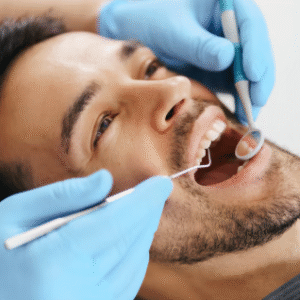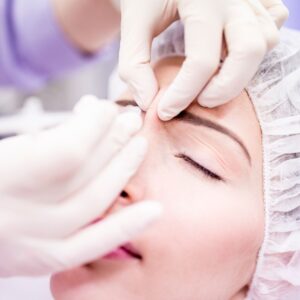So, you’ve decided to get a hair transplant in Chandigarh — a smart choice, given the city’s growing reputation for advanced cosmetic procedures, skilled surgeons, and affordable pricing. But before you go under the needle, there are a few important steps to take to ensure your procedure is smooth, successful, and stress-free.
Proper preparation plays a crucial role in maximizing your results and minimizing any risk of complications. Whether you’ve opted for FUE, FUT, or DHI, following a structured pre-surgery checklist will help you show up fully ready — physically and mentally.
In this guide, we’ll walk you through everything you need to do before your hair transplant in Chandigarh.
1. Choose a Certified Hair Transplant Clinic in Chandigarh
Preparation begins with the right clinic. Do your homework and choose a clinic with:
-
Board-certified and experienced hair transplant surgeons
-
Advanced technologies (FUE, DHI, Sapphire blades, etc.)
-
Clean and hygienic infrastructure
-
Transparent pricing and policies
-
Positive patient reviews and before-after results
Tip: Book your procedure at least 1–2 weeks in advance to give yourself time to prepare adequately.
2. Schedule a Detailed Consultation
Before surgery, your clinic should schedule a detailed consultation, either in-person or online. During this session:
-
Your scalp and hairline will be assessed
-
You’ll discuss your hair loss history and expectations
-
The doctor will explain the technique (FUE/FUT/DHI) best suited for you
-
You’ll be advised on graft count, procedure time, cost, and aftercare
Ask questions freely. The more clarity you have, the better prepared you’ll feel.
3. Share Your Medical History & Medications
Your surgeon must know about:
-
Any chronic illnesses (diabetes, hypertension, thyroid issues)
-
Ongoing medications (especially blood thinners, anti-depressants, steroids)
-
Allergies or past reactions to anesthesia
-
Habits like smoking, alcohol, or drug use
This helps the clinic plan your procedure safely and modify medications if needed.
4. Stop Smoking and Alcohol (7–10 Days Before)
Smoking and alcohol can impair:
-
Blood flow to the scalp
-
Healing and graft survival rate
-
Overall immune response
Stop both at least 7–10 days before surgery. This will significantly improve your post-surgery healing and final results.
5. Avoid Blood-Thinning Medications
If you’re taking any of the following, stop them 5–7 days before surgery (with doctor approval):
-
Aspirin
-
Ibuprofen
-
Vitamin E
-
Fish oil supplements
-
Herbal remedies like ginseng, garlic, or gingko biloba
These can increase bleeding during the procedure.
6. Wash Your Hair Thoroughly on the Day Before Surgery
You’ll be instructed to:
-
Wash your scalp using a mild shampoo
-
Avoid applying gels, oils, or styling products afterward
-
Keep your hair clean and free of buildup
Some clinics may ask you to avoid washing your hair on the day of surgery — so follow their instructions carefully.
7. Get a Good Night’s Sleep Before Surgery
Make sure you’re well-rested before your hair transplant. Being relaxed and well-slept:
-
Reduces anxiety
-
Helps your body handle local anesthesia better
-
Improves your stamina during the procedure (which can last 4–8 hours)
Avoid caffeine or screen time late at night to ensure deep sleep.
8. Eat a Light, Nutritious Breakfast on the Day
Don’t come to your procedure with an empty stomach. Most clinics recommend:
-
A light, protein-rich breakfast
-
Avoiding spicy or heavy meals
-
Drinking plenty of water (but not too much right before surgery)
You’ll be sitting still for a long time, so you’ll want to feel comfortable and fueled.
9. Wear Comfortable, Loose-Fitting Clothes
On the day of surgery:
-
Wear a button-down or zip-up shirt — not something you’ll need to pull over your head
-
Avoid caps or tight hats
-
Wear soft, cotton clothes to stay comfortable during the long procedure
Loose clothing helps prevent disturbing your grafts while changing after surgery.
10. Arrange Transportation in Advance
Most hair transplant procedures are done under local anesthesia, but post-surgery you may feel:
-
Slight drowsiness
-
Discomfort
-
Fatigue from sitting for hours
Don’t drive yourself home. Ask a friend or family member to accompany you, or book a cab in advance.
11. Take Pre-Op Photos (Optional)
Many clinics take pre-op photos to track your results over time. You can also:
-
Take your own photos from different angles
-
Use consistent lighting for comparison later
-
Start documenting your hair restoration journey
These images are helpful for measuring progress in the months after the transplant.
12. Mentally Prepare for the Journey Ahead
Lastly, understand that hair transplant results are not immediate. You’ll need to:
-
Be patient for 3–6 months for visible growth
-
Deal with temporary shedding (shock loss)
-
Follow strict aftercare protocols for the best results
Trust the process. Most patients see fantastic results between 6 to 12 months after surgery.
Final Thoughts
A hair transplant can be life-changing — not just for your hairline but for your self-confidence. But success begins before the surgery, with the right preparation. Choosing a reputable clinic in Chandigarh, following medical guidance, and mentally preparing yourself will ensure your journey is smooth and rewarding.
By ticking off this pre-surgery checklist, you’ll walk into the procedure confident, informed, and ready for the transformation ahead.








